The Importance Of A Clean Hairbrush
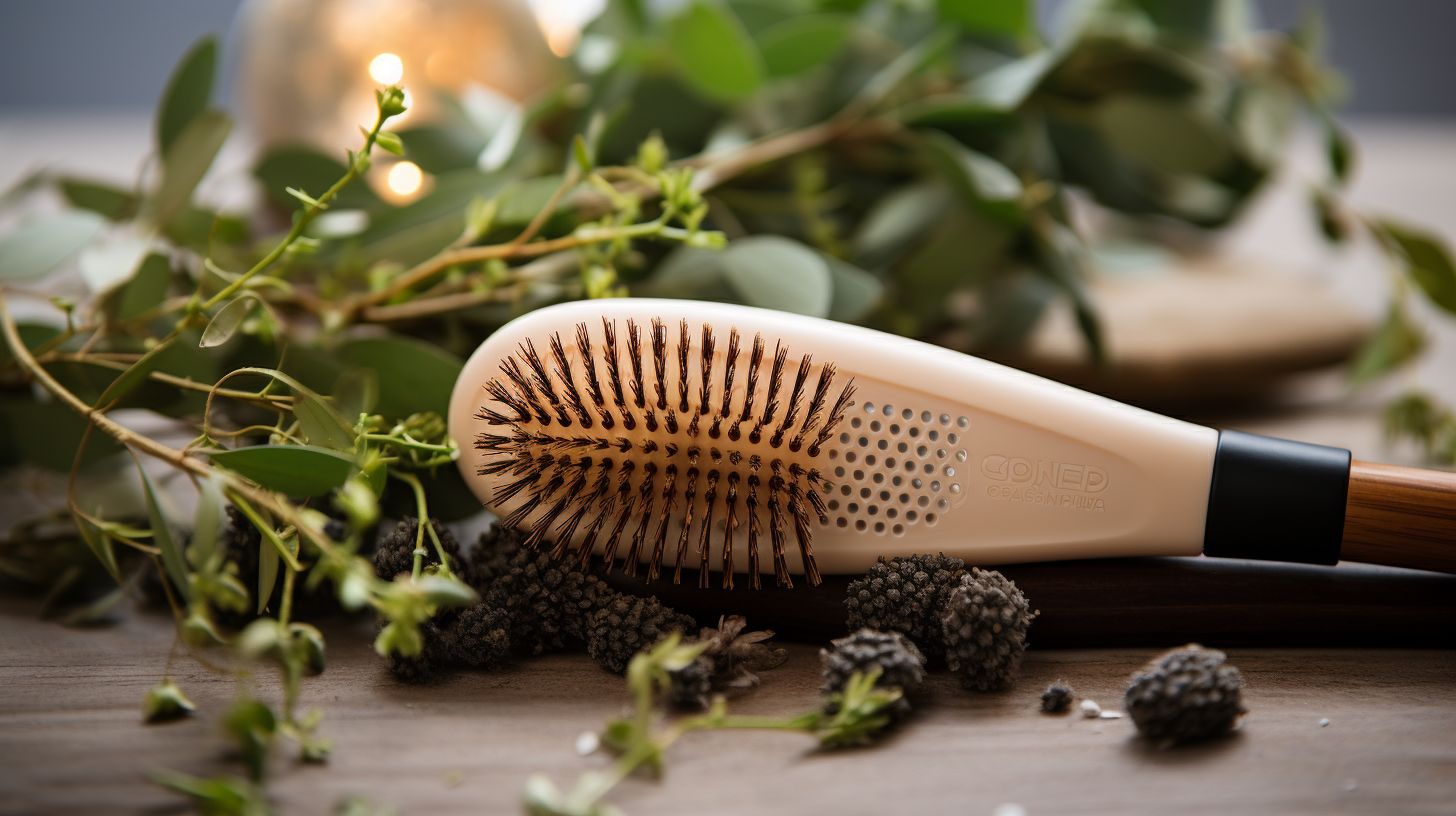
Struggling with hair loss can often lead to examining every aspect of your haircare routine. Your trusty hairbrush collects more than just stray hairs; it’s a magnet for oils, dust, and leftover product.
This post will guide you through the whys and hows of keeping your brush pristine, which could be key to better scalp health. Discover cleaner brushing ahead!
Key Takeaways
- Keeping your hairbrush clean can stop bad germs from growing and keep your scalp healthy.
- Wash brushes with soapy water to get rid of oils, dead skin, and product stuff that sticks in the bristles.
- If you use many hair products or are losing a lot of hair, clean your brush more often, like once a week or after every use for lice combs.
- Dry your brush well after washing it because wet brushes can make fungus grow which is not good for your scalp.
- Pull out trapped hairs every time you use your brush to help prevent dirt buildup.
The Significance of Regular Hairbrush Cleaning
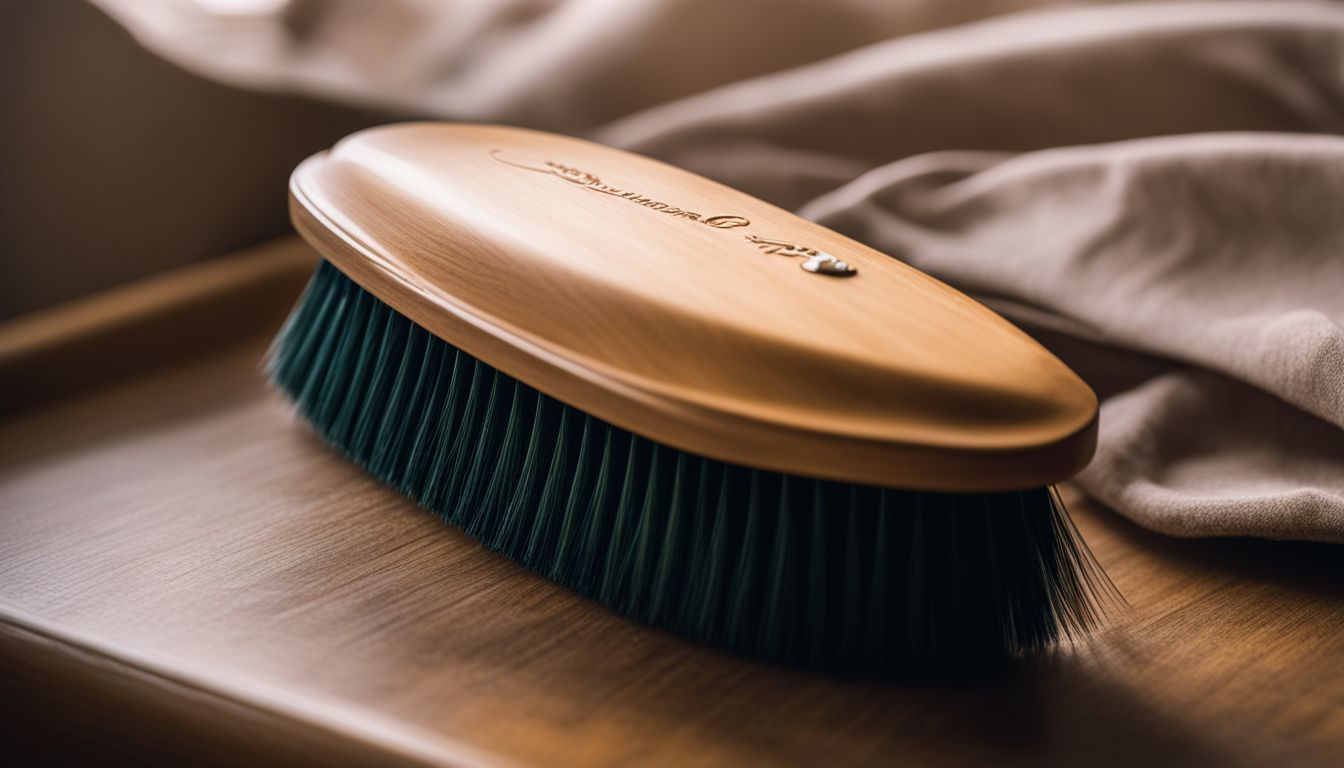
Regular hairbrush cleaning is essential for maintaining optimal hair health and preventing the growth of bacteria and fungi. It helps to remove dead skin cells, product buildup, and other debris that can lead to scalp conditions such as dandruff.
Ensuring optimal hair health
Clean hairbrushes help keep your scalp and hair happy. Dirt and product buildup on a dirty brush can hurt your scalp and lead to hair loss. Trichologists, who are experts on hair and scalp health, say it’s very important to have a clean place for good microbes to live.
This helps stop itching and other problems with your scalp.
To make sure you don’t pull or hurt your hair when you brush, always use a clean brush. It makes detangling easier, so brushing doesn’t break your hairs. Next up, let’s talk about how often you should give that brush of yours a good scrub-down.
Preventing bacterial and fungal growth
Keeping your hairbrush free from bacteria and fungus is key to good scalp health. Dirty brushes can make a cozy home for germs, leading to itchiness or even infections that might cause more hair to fall out.
If you worry about thinning hair, it’s extra important to stop these tiny troublemakers by keeping your brush clean.
To fight off germs, wash your brush often with soapy water. This means getting rid of all the loose hairs after each use and giving it a good scrub now and then. Use a toothbrush for tight spots where nasties like to hide.
Dry it well before using again because wet brushes are where fungus loves to grow. Make this part of your routine, and you can help keep both your hairbrush and your locks in top shape!
How Often to Clean Your Hairbrush
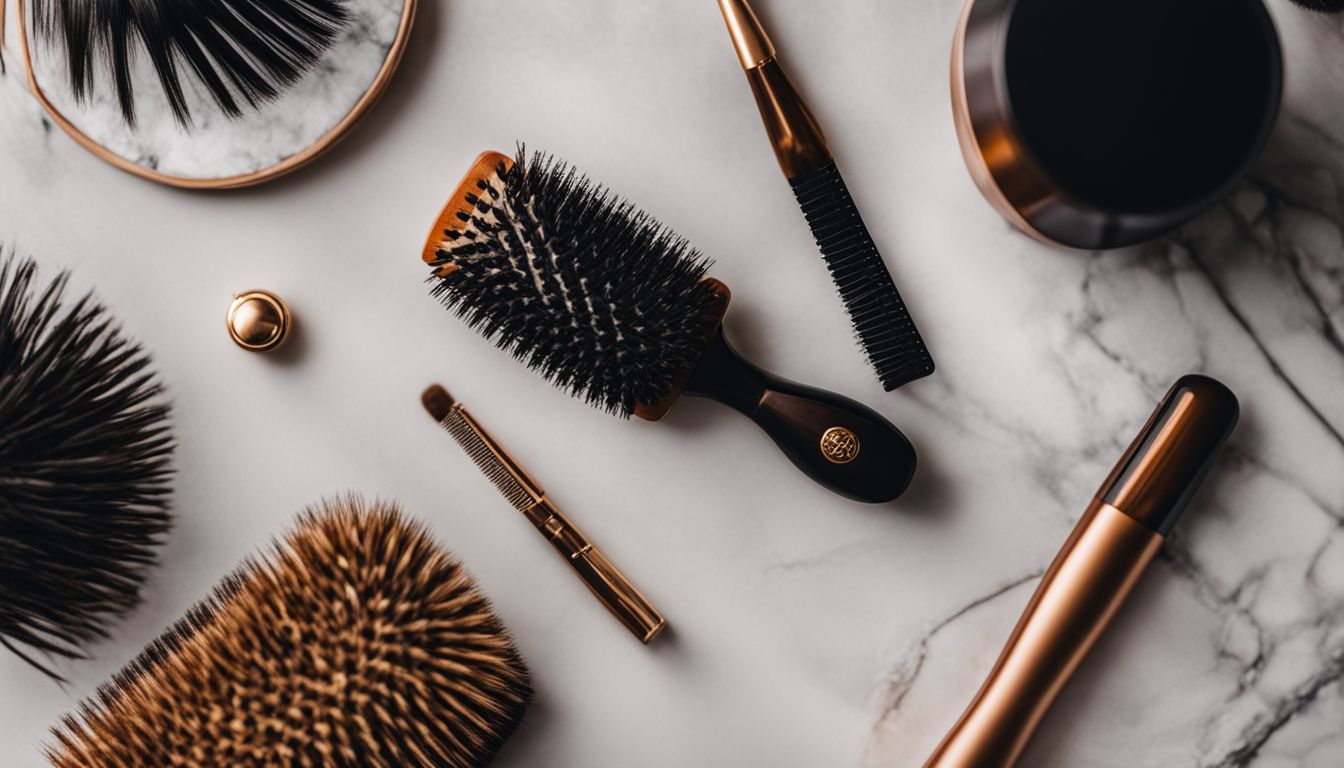
Regular hairbrush cleaning is essential for maintaining optimal hair health and preventing bacterial and fungal growth. Guidelines for maintenance frequency will ensure that your hairbrush stays clean and hygienic.
Guidelines for maintenance frequency
Keeping your hairbrush clean is crucial if you’re dealing with hair loss. Clean tools help keep your scalp healthy and your hairstyle looking good. Here’s what to do:
- If you use lots of styling products like gels or dry shampoos, wash your brush every week. These products can build up fast.
- Even without using many products, aim to clean your brush every two to three weeks. This prevents dirt from getting back into your hair.
- Lost a lot of hair? Check your brush daily. Remove trapped hairs so they don’t encourage germs.
- Use a gentle soap and water mix to wash your brush. It helps get rid of oils and dead skin cells.
- After cleaning, let your brush dry completely before you use it again. This stops mold from growing.
- Brushes like paddle brushes and round brushes need special care; follow their specific cleaning guides.
- For someone who uses a lice comb, clean it after each use to stop the spread of lice.
Step-by-Step Guide to Cleaning Your Hairbrush
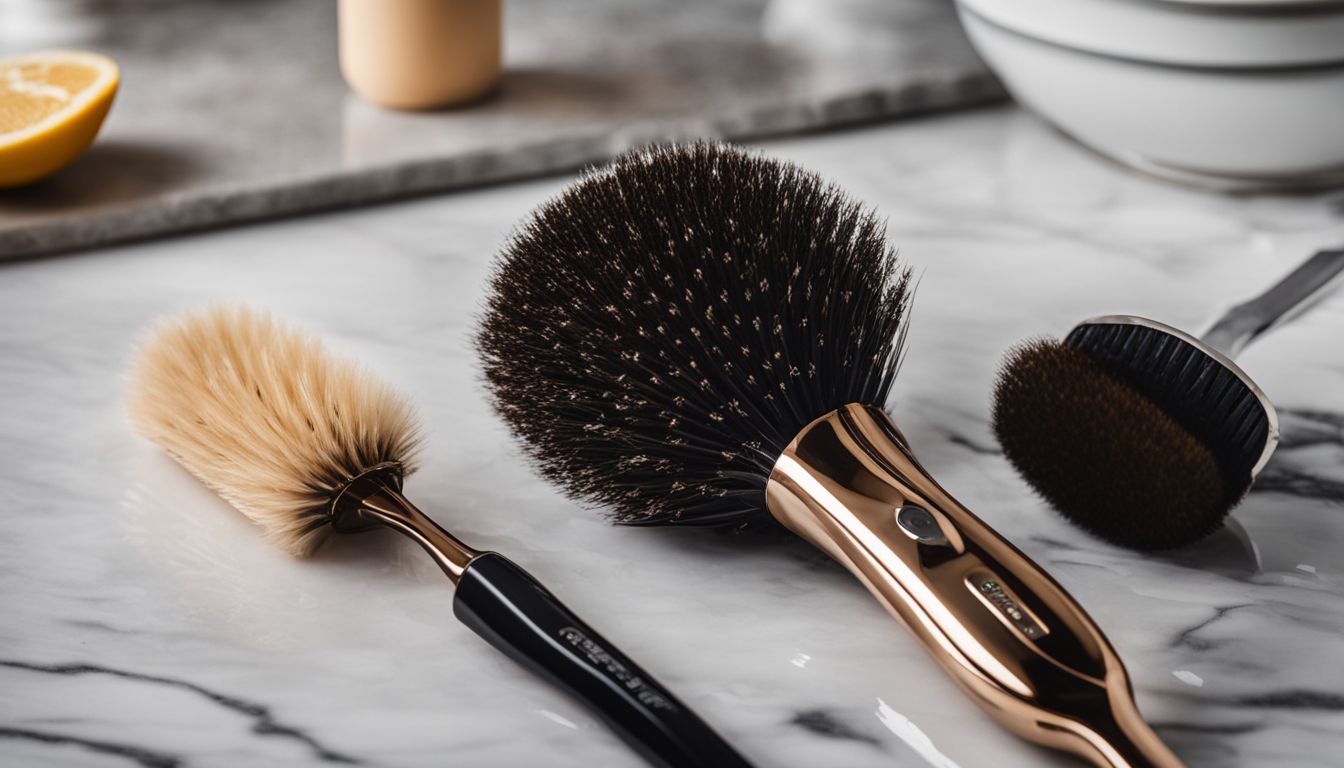
Start by removing any trapped hair from the bristles of your brush, then cleanse it with soapy water and scrub thoroughly to ensure all debris is removed. Rinse and dry your hairbrush according to best practices for optimal hygiene.
To learn more about maintaining the cleanliness of different types of brushes and how often you should clean them, continue reading!
Removing trapped hair
Keeping your hairbrush clean is key, especially if you’re dealing with hair loss. Trapped hair can create a home for dirt and oil, making cleaning a must.
- First, pull out all the loose hairs from the bristles. Use your fingers or a comb to gently tease out hair strands.
- For hairs that are tight and not coming out easily, cut them down the middle with scissors. Then lift them away from the base with a pick or tweezers.
- After removing big clumps, use a toothbrush to scrub between bristles. This helps get rid of stubborn hairs and skin flakes.
- Make sure to turn the brush over and clean the backside as well. Dirt and residue often hide there too.
- Shake the brush well to dislodge any remaining loose debris after you’ve finished the initial cleaning steps.
- Take extra care near the cushioned part of a paddle brush as it can trap more dead skin cells and sebum from your scalp.
- If you have long hair, check around the handle where longer strands may wrap themselves during detangling sessions.
- Wipe down the handle with a disinfecting wipe to remove oils transferred from your hands which could affect your scalp health.
- Lastly, avoid tugging too hard on trapped hairs as this could damage the brush’s bristles or cushioning, which is important for gentle detangling of delicate hair follicles suffering from loss issues.
Cleansing with soapy water
After removing trapped hair, it is crucial to ensure your hairbrush is thoroughly cleansed with soapy water. This step is essential for eliminating dirt, bacteria, and product buildup from the bristles. Here’s how to effectively cleanse your hairbrush with soapy water:
- Fill a bowl or sink with warm water and add a small amount of gentle shampoo.
- Swirl the soapy solution to create suds.
- Place the hairbrush in the water, ensuring that the bristles are completely submerged.
- Gently scrub the bristles with your fingers or a soft brush to remove any residue or build – up.
- Rinse the brush under running water until all the soap and debris are washed away.
- Shake off excess water and use a clean towel to pat the bristles dry.
Detailed scrubbing techniques
After cleansing your hairbrush with soapy water, thorough scrubbing is crucial to remove stubborn residue and ensure a deep clean. Here’s a step-by-step guide to detailed scrubbing techniques:
- Use an old toothbrush or a brush cleaning tool to scrub between the bristles, removing any remaining debris and buildup.
- For plastic or metal brushes, soak them in a solution of warm water and white vinegar for 15 – 20 minutes to help loosen dirt and grime before scrubbing.
- Gently scrub the bristles or teeth of the brush with the cleaning tool, ensuring you reach all areas of the brush head.
- Rinse the brush thoroughly to remove any loosened particles and residual cleaning solution.
- Allow the brush to air dry completely before using it again to prevent bacterial growth.
Rinsing and drying best practices
After thoroughly scrubbing your hairbrush, it’s crucial to rinse and dry it properly to prevent any lingering bacteria and fungi from causing further issues. Here are the best practices for rinsing and drying your hairbrush:
- Rinse the brush under running water to remove any remaining soapy residue, ensuring that all hair strands and debris are completely washed away.
- Use a clean towel to gently pat the hairbrush dry, removing as much moisture as possible.
- Allow the hairbrush to air – dry completely in an upright position, ideally with the bristles facing down to prevent water from accumulating at the base of the brush.
- If necessary, use a blow – dryer on a low heat setting to expedite the drying process, ensuring that all parts of the brush are thoroughly dry before using it again.
Special Considerations for Different Brush Types
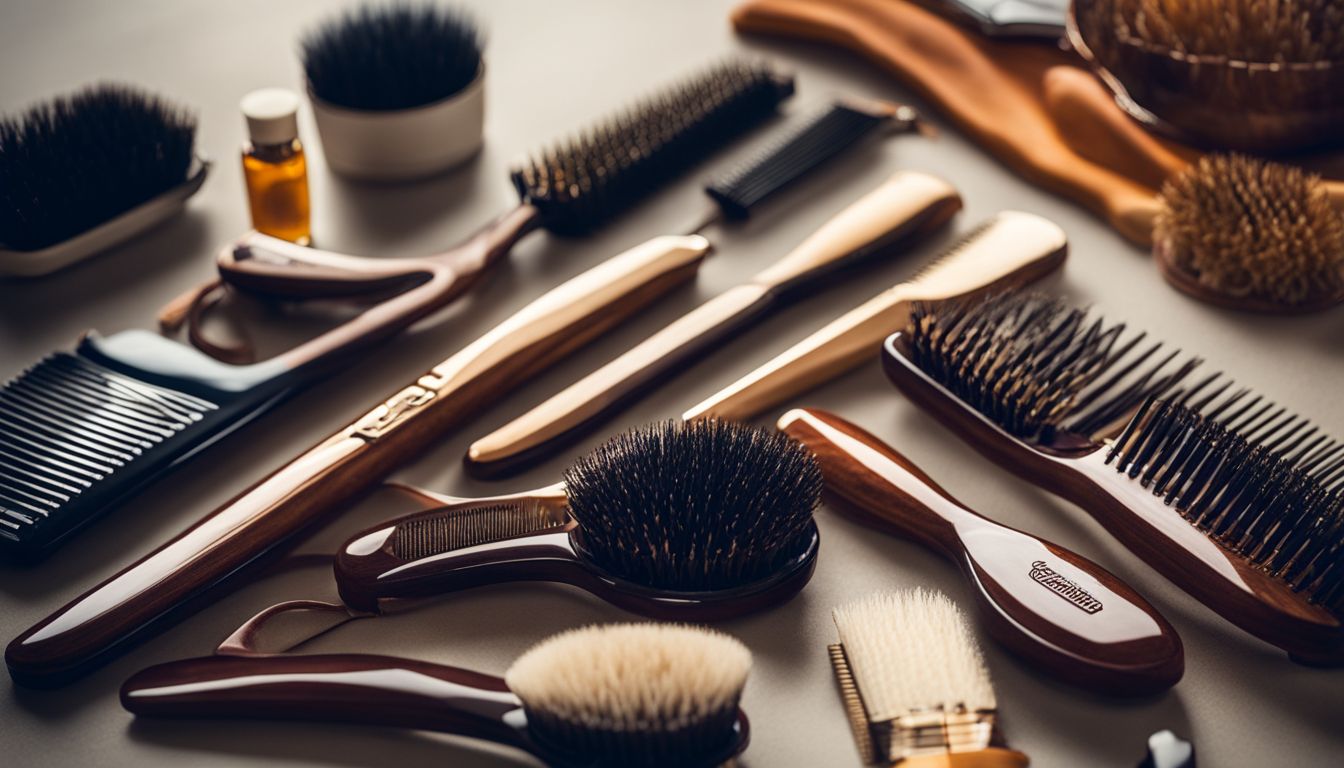
When it comes to cleaning different types of hairbrushes, there are specific techniques that work best for each variety. From handling paddle brushes and round brushes to effectively cleaning lice combs, understanding these distinctions can help you maintain optimal hair health.
Handling of paddle brushes and round brushes
Paddle brushes and round brushes are often preferred by people dealing with hair loss, as they can effectively detangle hair without causing further breakage. Here are some tips for handling and cleaning these types of brushes:
- Remove trapped hair: Regularly remove any trapped hair from the bristles using a comb or your fingers to prevent further tangling and promote smoother detangling during use.
- Use a gentle cleansing solution: Clean paddle and round brushes with a mild soapy solution to remove product buildup, dead skin cells, and excess oils that can contribute to scalp issues.
- Scrubbing technique: Gently scrub the bristles in a circular motion using a soft brush or cloth to ensure thorough cleaning without damaging the bristles or cushioning of the brush.
- Rinse with care: After cleaning, rinse the brush under lukewarm water, ensuring all soap residue is removed to prevent scalp irritation when using the brush again.
- Drying process: Allow the paddle or round brush to air dry completely before using it again, as moisture trapped in the bristles can lead to bacterial growth and unpleasant odors.
Tips for cleaning lice combs effectively
Cleaning lice combs is crucial to prevent scalp irritation and lice spread. Use a fine-toothed comb to remove trapped hair and debris from the comb’s teeth.
- Soak the lice comb in hot water with soap for 10 – 15 minutes to dissolve product residue and kill bacteria.
- Scrub the comb thoroughly using an old toothbrush, focusing on the teeth and crevices to ensure all dirt is removed.
- Rinse the comb under running water, ensuring all soap and debris are washed away.
- To dry, place the comb on a clean towel and allow it to air dry completely before its next use.
- For stubborn residue, consider soaking the comb in a mixture of vinegar and water for about 30 minutes before scrubbing it.
- Ensure that your household items used during cleaning are also sanitized regularly to prevent cross – contamination.
Maintaining Your Hairbrush Between Cleans
To keep your hairbrush clean between deep cleans, make a habit of removing trapped hair after each use and giving it a quick rinse with warm water. This simple routine can minimize build-up and promote better hair health overall.
Simple habits to reduce build-up
To keep your hairbrush clean and reduce build-up, follow these simple habits:
- Remove trapped hair from your brush after each use to prevent it from accumulating.
- Regularly wash your brush with soapy water to remove oils and residue.
- Allow the brush to dry completely before using it again to avoid bacterial growth.
- Avoid using excessive styling products on your hair to minimize build – up on the brush.
- Consider using a separate brush for applying styling products to minimize residue transfer.
- Store your brush in a clean, dry area when not in use to prevent dirt and dust accumulation.
Conclusion
Remember, regularly cleaning your hairbrush is crucial for maintaining healthy hair and scalp. By removing trapped hair, dirt, and oils, you can prevent bacterial and fungal growth that may lead to scalp issues.
Knowing when and how to clean your specific brush type ensures effective maintenance. Keep in mind that a clean brush not only promotes healthier-looking hair but also reduces the risk of potential scalp conditions.
Lastly, implementing simple habits to maintain cleanliness between deep cleans can make a significant difference in the overall health of your hair.
FAQs
1. Why should I clean my hairbrush often?
Cleaning your hairbrush often stops dirt, oils from sebaceous glands, and dead skin from building up. This keeps your hair clean.
2. Can a dirty hairbrush cause head problems?
Yes, a dirty brush can spread infections like demodex or mycotic infections when it touches your scalp.
3. How is cleaning my hairbrush like caring for a paintbrush or hair dryer?
Like with paintbrushes and hair dryers, taking care of your tools means they work better for you. A clean brush is good for your hair-care routine.
4. What does a hairstylist say about cleaning brushes?
A stylist will tell you that cleaning frequency helps the brush work well and exfoliates your scalp while brushing without passing germs.
References
- Van Neste MD. Assessment of hair loss: clinical relevance of hair growth evaluation methods. Clinical and Experimental Dermatology: Clinical dermatology. 2002 Jul;27(5):358-65.
- Uslu H, Uyanik M, Ayyildiz A. Mycological examination of the barbers’ tools about sources of fungal infections. Mycoses. 2008 Sep;51(5):447-50.
